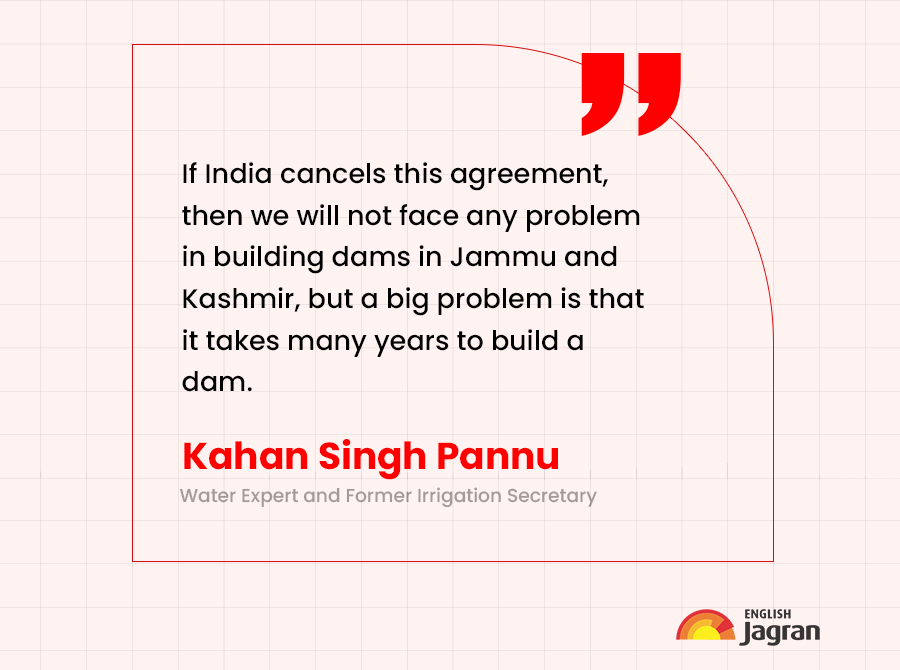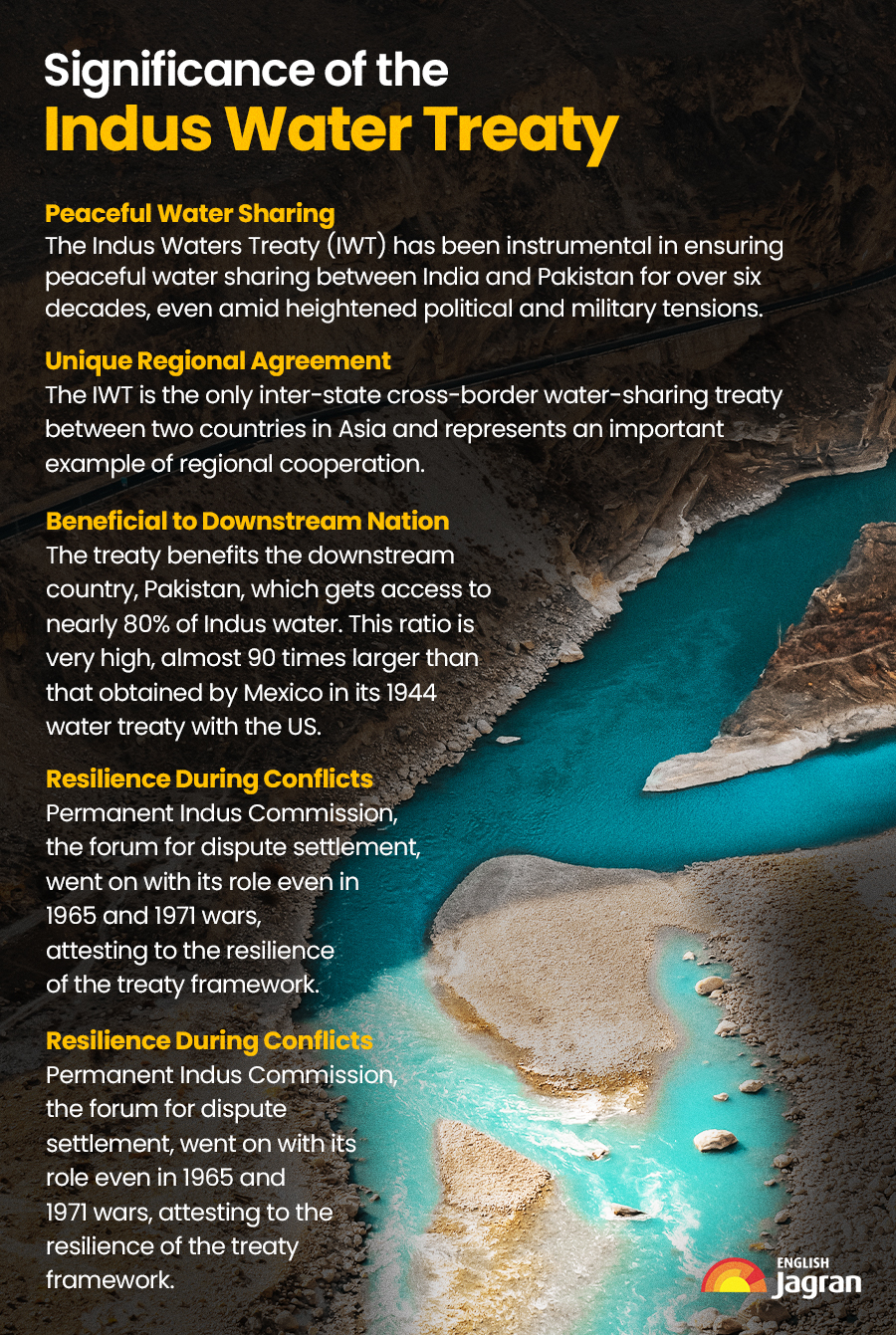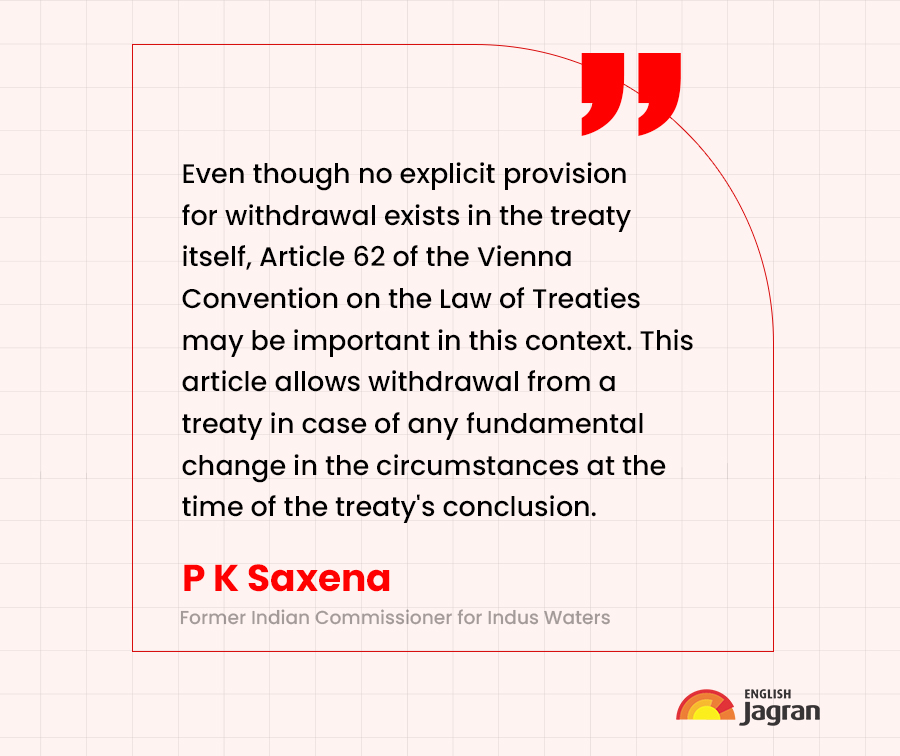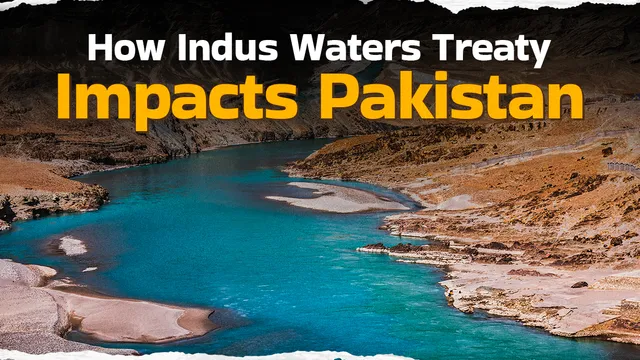- By Akansha Pandey
- Thu, 24 Apr 2025 07:25 PM (IST)
- Source:JND
As the deadly Pahalgam terror attack worsened the already strained ties with Pakistan, India on April 23, 2025, suspended the Indus Waters Treaty for the first time in 64 years. The water sharing agreement, which has survived wars, crises, and decades of hostile diplomacy, came to a halt as India sharpened its attack on its neighbour which has been harbouring and nurturing terrorists for decades. India’s strong reaction came after the terrorist attack in Baisaran Valley near Pahalgam left 26 people dead and several others injured.
What is the Indus Waters Treaty?
The Indus Waters Treaty (IWT) is a deal brokered by the World Bank between India and Pakistan on September 19, 1960. Signed in Karachi by then prime minister, Jawaharlal Nehru and Pakistan president Ayub Khan, it determines the distribution of the waters of the Indus river and its tributaries - Ravi, Beas, Sutlej, Jhelum and Chenab.
Under the Indus Waters Treaty, India enjoys “unrestricted access” to three Eastern rivers - the Ravi, Beas and Sutlej, whereas Pakistan has access to the Western rivers of Indus, Chenab, Jhelum. The treaty allows New Delhi to extract water from the western rivers for certain non-consumptive, agricultural, domestic use and hydroelectric power generation. Provision under Article III (4) of the treaty states that India “shall not store any water of, or construct any storage works on, the Western Rivers,” other than those permitted by the provisions.
Water expert and former Irrigation Secretary, Kahan Singh Pannu, stated that since independence, a significant amount of water had flowed to Pakistan. To address this, a plan was made to draw 10,000 cusecs of water from the Chenab River in Jammu and Kashmir by constructing a large canal. The idea was to divert water from the Chandra and Bhaga streams (tributaries of the Chenab) to the Ravi River through the proposed Maru Tunnel. This project was originally designed in 1955 by the then Chief Engineer of the Punjab Canal Department. However, it was shelved following the signing of the Indus Waters Treaty in 1960, which allocated the waters of the Chenab, Jhelum, and other western rivers entirely to Pakistan. According to Pannu, Punjab could still receive 10,000 cusecs of water if this project is revived and completed.

Why Was The Indus Waters Treaty Signed?
After the partition of India and Pakistan in 1947, the Indus River system, which flows through both countries (originating in Tibet and also touching Afghanistan and China), immediately became a point of potential conflict over who will control water and who gets how much water. Things got tricky early on. India briefly stopped water flow to Pakistan in 1948. Later on, Pakistan raised a complaint to the United Nations (UN) against India not letting enough water through. The UN suggested getting help, which led to the World Bank stepping in to mediate. After nine years of negotiation, PM Nehru and Pakistan president Ayub Khan finally signed the agreement in 1960.
The preamble of the treaty says: "The Government of India and the Government of Pakistan, being equally desirous of attaining the most complete and satisfactory utilisation of the waters of the Indus system of rivers and recognising the need, therefore, of fixing and delimiting, in a spirit of goodwill and friendship, the rights and obligations of each in relation to the other concerning the use of these waters and of making provision for the settlement, in a cooperative spirit, of all such questions as may hereafter arise in regard to the interpretation or application of the provisions agreed upon herein, have resolved to conclude a Treaty in furtherance of these objectives, and for this purpose have named as their plenipotentiaries.”

The decision to suspend the IWT will straightaway give India more options on how to use the waters of the Indus river system.
Why India Suspended Indus Waters Treaty, How Will It Impact Pakistan
This decision of India comes a day after Jammu Kashmir’s Pahalgam terrorist attack on tourists where 26 tourists were killed. The suspension of the Indus Waters Treaty could lead to severe water shortage in Pakistan as Indus and its tributaries originate approximately 80 per cent of water supply which can affect agriculture, economic and environmental sectors of Pakistan. The treaty thus becomes a tool in the hands of the Indian government to build pressure on its neighbour to take action against terrorism.
The Indus River network comprising the Jhelum,Chenab, Ravi, Beas and Sutlaj rivers supports approx 10 million population of Pakistan as principal source of water. IWT suspension will affect Pakistan as it receives 80 per cent of the total water flow which is vital for agriculture in Pakistan especially in the provinces of Punjab and Sindh.
In the agriculture sector, key crops like wheat, rice and cotton require significant irrigation. Water shortage could result in crop failures, threatening livelihood and food security. The agriculture sector contributes 23 per cent to Pakistan’s national income and supports 68 per cent of its rural populations.
Talking about the impact of suspension of the treaty, former Indian Commissioner for Indus Waters, P K Saxena points out that if the process is carried out at a time when sowing season has already begun in Pakistan, it could have serious implications, especially for Pakistan's Punjab region, which is heavily dependent on the irrigation system based on the Indus and its tributaries.

Many dams in Pakistan, including the tarbela and Mangla dam depend on the Indus River Water flow for hydroelectricity power generation. Reduced water flow could exacerbate Pakistan’s existing energy crisis, leading to power shortage and hindering economic activity.
How Will India Enforce The Suspension Of IWT?
India can do two things. The first is to halt regulated water flow in the western rivers (Indus, Jhelum and Chenab) and stop releasing water from dams and hydroelectric projects on these rivers. While natural flow through these rivers will continue, regulated releases, which are critical for Pakistan’s irrigation and drinking water, could stop. For example, the Baglihar Dam on the Chenab could retain water, reducing downstream flow to Pakistan.
The second is that India could accelerate infrastructure development by fast-tracking storage projects on western rivers, such as the Pakal Dul (1,000 MW) and the Sawalkot (1,856 MW) dams on the Chenab. This would allow India to increase control over water flow in Chenab in the future.
In addition, technical meetings, data sharing, and dispute-resolution mechanisms under the IWT can be frozen. India will have to no longer notify Pakistan about water flow changes or project designs.
Speaking to jagran.com, Saxena also highlighted how India stands to benefit from the treaty’s suspension. “If India moves in this direction, it will no longer be obliged to follow the "reservoir flushing" restrictions that were in place for the Kishanganga reservoir and other projects on the western rivers in the absence of the treaty. Currently, the Indus Waters Treaty prevents India from flushing the reservoirs as it takes several days to refill them.The treaty stipulates that the reservoir can be filled after flushing during August only, peak of the monsoon season. But if the treaty is revoked or suspended, India will have the right to fill it at any time,” the former Commissioner for Indus Waters said.

